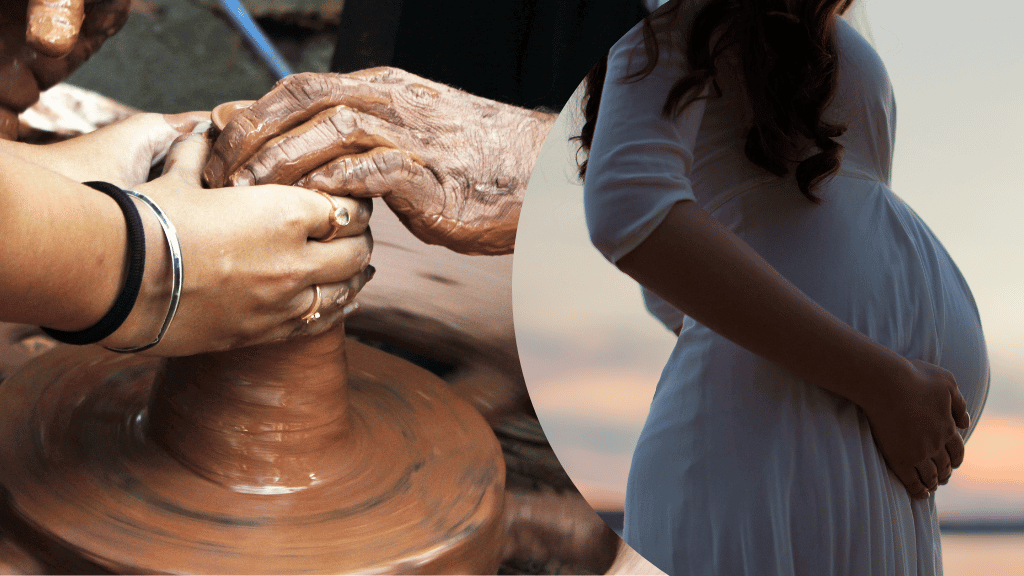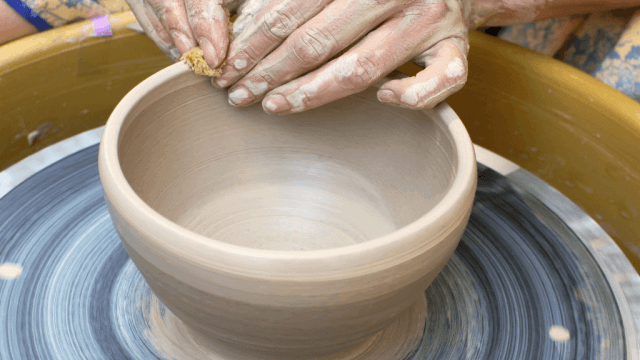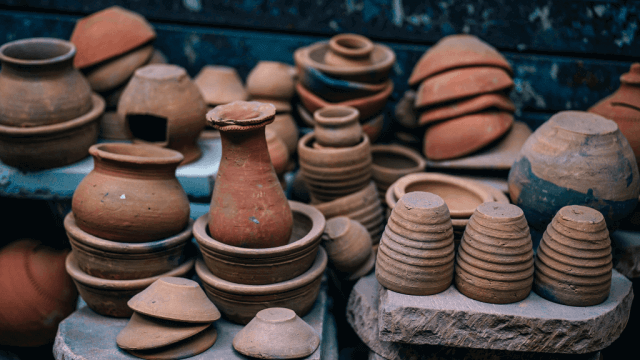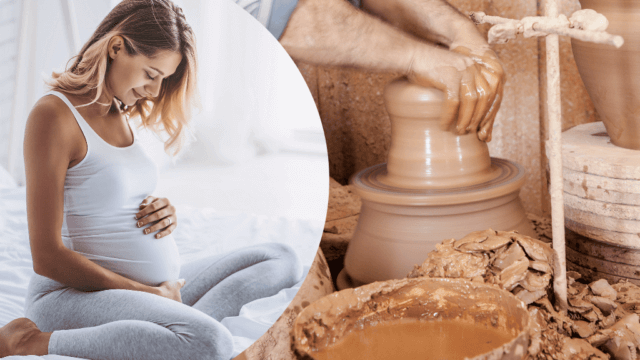During pregnancy, it is essential to take extra safety precautions while engaging in pottery-making.
Pregnant individuals should wear protective gear like face masks, gloves, and aprons to avoid contact with harmful materials.
Ensure good ventilation to prevent inhalation of dust and chemical fumes.
Avoid using lead-based glazes to minimize the risk of lead exposure.
Choose non-toxic materials and glazes whenever possible and ensure all cleaning supplies are safe for pregnant individuals.
Always wash hands thoroughly after each pottery session.
Consult your healthcare provider before engaging in pottery during pregnancy to ensure it is safe for you and your baby.
Understanding Pottery Hazards During Pregnancy
Pregnancy is a time of heightened caution and awareness, so it’s essential to be informed about the potential risks associated with pottery while pregnant.
Pottery can expose individuals to chemicals, dust, and other hazards, making it essential to follow strict safety precautions to protect both the expectant mother and her baby.
Choosing Safe Materials and Glazes
Selecting non-toxic materials and glazes is crucial.
Avoid working with lead-based glazes, which can lead to lead exposure.
Pregnant individuals should opt for lead-free, food-safe, and child-safe glazes whenever possible.
Non-toxic Clay Options
Choose clays with non-toxic labels and those that do not generate excessive dust.
Air-dry or water-based clay varieties are good options, as they are less likely to produce harmful particles during use.
Protective Gear and Proper Ventilation
Wearing protective gear is essential when working with pottery during pregnancy.
Equip yourself with a proper face mask, gloves, and an apron to avoid direct contact with harmful materials and to prevent inhalation of dust and chemical fumes.
Ensure your workspace has adequate ventilation, ideally with windows or doors that open to the outdoors.
Good ventilation helps reduce airborne particles and fumes, keeping the air fresh and minimizing exposure risks.
Cleaning and Hygiene
Maintaining a clean working space is another way to minimize risks.
Use safe cleaning materials in your pottery studio, and avoid harsh chemicals that could be harmful to pregnant individuals.
Wipe surfaces down frequently to reduce dust and keep the area tidy.
Always wash your hands thoroughly after each pottery session, as well as before and after eating to minimize exposure to hazardous materials.
Consulting Your Healthcare Provider
Before engaging in pottery while pregnant, it is essential to consult your healthcare provider to ensure it is safe for you and your baby.
They may provide specific recommendations based on your individual needs and risk factors.
Appropriate Workspace Setup
Arrange your pottery workspace to minimize risks during pregnancy.
This includes setting up ergonomic seating to support posture and reduce strain on the back and neck.
Keep tools and materials within easy reach to avoid excessive bending, lifting, or stretching.
Modifying Techniques to Reduce Physical Strain
Consider modifying your pottery techniques to minimize physical strain during pregnancy.
Engage in less strenuous activities and avoid prolonged standing or sitting in one position.
Take frequent breaks and stretch periodically to promote circulation and prevent discomfort.
Safe Firing and Glazing Practices
Adopt safe firing and glazing practices to reduce hazardous emissions.
Opt for electric or gas-fired kilns instead of wood-fired kilns, which produce more smoke and fumes.
Make sure your kiln is well-ventilated, and use temperature-controlled firing processes to minimize harmful fumes.
Ensure other individuals are nearby during firing and glazing to assist in case of emergency.
Artificial Nail Considerations
During pregnancy, it’s important to avoid potentially harmful substances found in some artificial nail products.
Some chemicals used in these products can be absorbed through the nail bed, posing risks to you and your baby.
If you use artificial nails, consider limiting their use during pregnancy or opting for alternatives with fewer chemical components.
Sharing Your Studio With Others
If you share your pottery studio with others, ensure they are aware of your pregnancy and the need for added safety precautions.
This may include requesting users to refrain from using potentially hazardous materials or opting for community studios that prioritize health and safety measures to protect all individuals.
Frequently Asked Questions
In this section, we address some of the most common questions that arise when discussing pottery safety during pregnancy.
Read on for direct and concise answers that are related to the precautions and information from this blog post.
Is it safe to continue pottery during pregnancy?
Yes, it can be safe provided you follow proper safety precautions, use non-toxic materials, maintain a clean workspace, and employ appropriate protective gear.
Always consult your healthcare provider before engaging in pottery during pregnancy.
What are the risks of working with clay when pregnant?
The risks include exposure to dust particles, chemical fumes, and physical strain.
These concerns can be minimized by following the safety guidelines provided in this blog, such as using non-toxic clay, ensuring proper ventilation, and taking breaks to mitigate physical stress.
Are there any specific clay types to avoid during pregnancy?
Avoid clays that generate excessive dust or contain harmful chemicals.
Opt for air-dry or water-based clays that are labeled as non-toxic and safe for use during pregnancy.
What precautions should be taken during glazing and firing while pregnant?
Use lead-free and food-safe glazes, and avoid working with materials that emit high amounts of fumes.
Choose electric or gas-fired kilns over wood-fired kilns, and ensure proper ventilation throughout the firing process.
Keep other individuals nearby for assistance if needed.
How can I minimize physical strain while working on pottery during pregnancy?
Arrange your workspace ergonomically, modify your pottery techniques to reduce strain, and take frequent breaks to avoid prolonged sitting or standing.
Stretch periodically to promote circulation and prevent discomfort.











